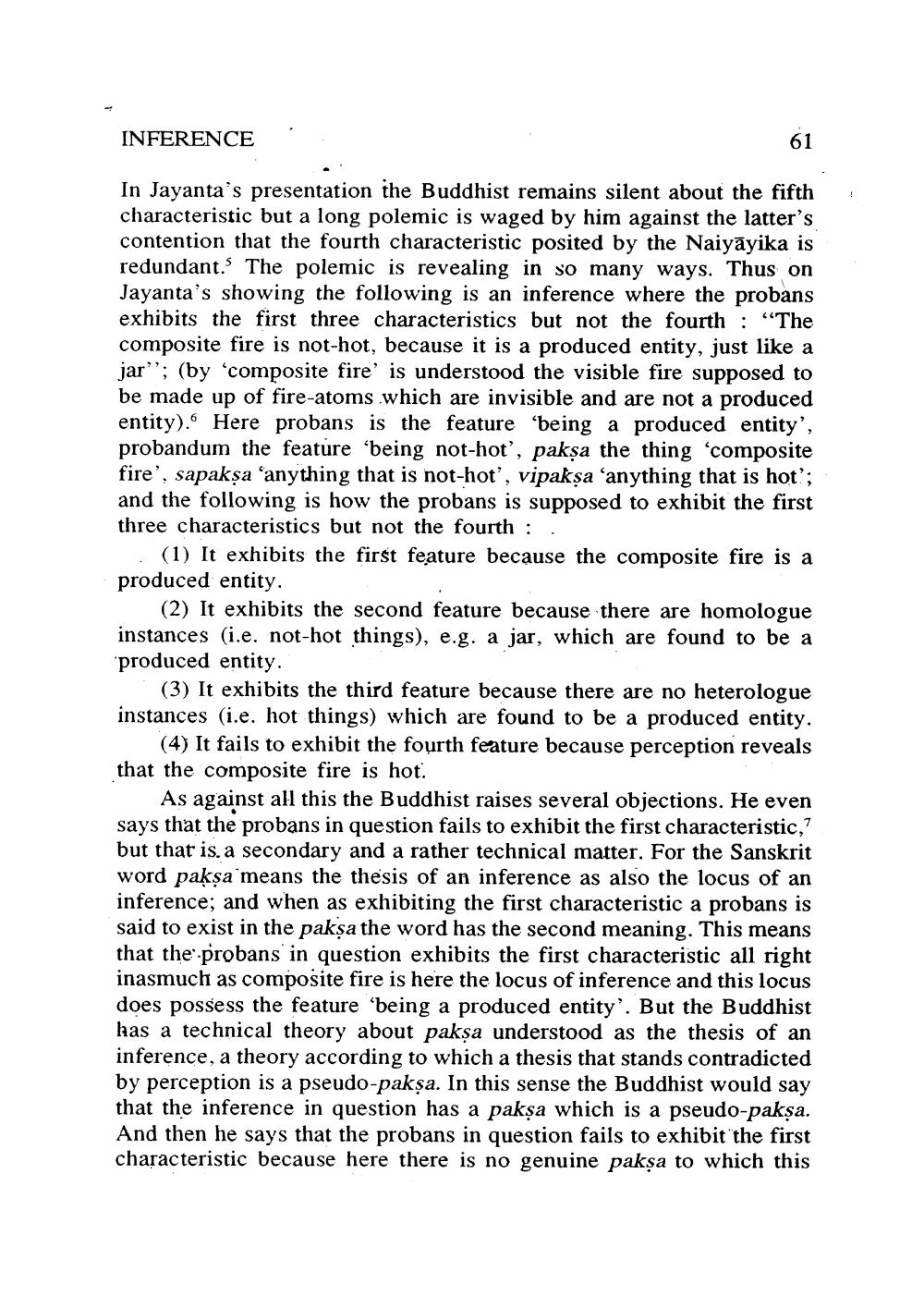________________
INFERENCE
In Jayanta's presentation the Buddhist remains silent about the fifth characteristic but a long polemic is waged by him against the latter's contention that the fourth characteristic posited by the Naiyāyika is redundant. The polemic is revealing in so many ways. Thus on Jayanta's showing the following is an inference where the probans exhibits the first three characteristics but not the fourth : “The composite fire is not-hot, because it is a produced entity, just like a jar?; (by 'composite fire' is understood the visible fire supposed to be made up of fire-atoms which are invisible and are not a produced entity). Here probans is the feature being a produced entity', probandum the feature ‘being not-hot', pakṣa the thing 'composite fire', sapakṣa ‘anything that is not-hot, vipaksa ‘anything that is hot'; and the following is how the probans is supposed to exhibit the first three characteristics but not the fourth :
(1) It exhibits the first feature because the composite fire is a produced entity.
(2) It exhibits the second feature because there are homologue instances (i.e. not-hot things), e.g. a jar, which are found to be a "produced entity.
(3) It exhibits the third feature because there are no heterologue instances (i.e. hot things) which are found to be a produced entity.
(4) It fails to exhibit the fourth feature because perception reveals that the composite fire is hot.
As against all this the Buddhist raises several objections. He even says that the probans in question fails to exhibit the first characteristic, but that is a secondary and a rather technical matter. For the Sanskrit word pakṣa means the thesis of an inference as also the locus of an inference; and when as exhibiting the first characteristic a probans is said to exist in the paksa the word has the second meaning. This means that the probans in question exhibits the first characteristic all right inasmuch as composite fire is here the locus of inference and this locus does possess the feature 'being a produced entity'. But the Buddhist has a technical theory about paksa understood as the thesis of an inference, a theory according to which a thesis that stands contradicted by perception is a pseudo-pakşa. In this sense the Buddhist would say that the inference in question has a paksa which is a pseudo-paksa. And then he says that the probans in question fails to exhibit the first characteristic because here there is no genuine paksa to which this




